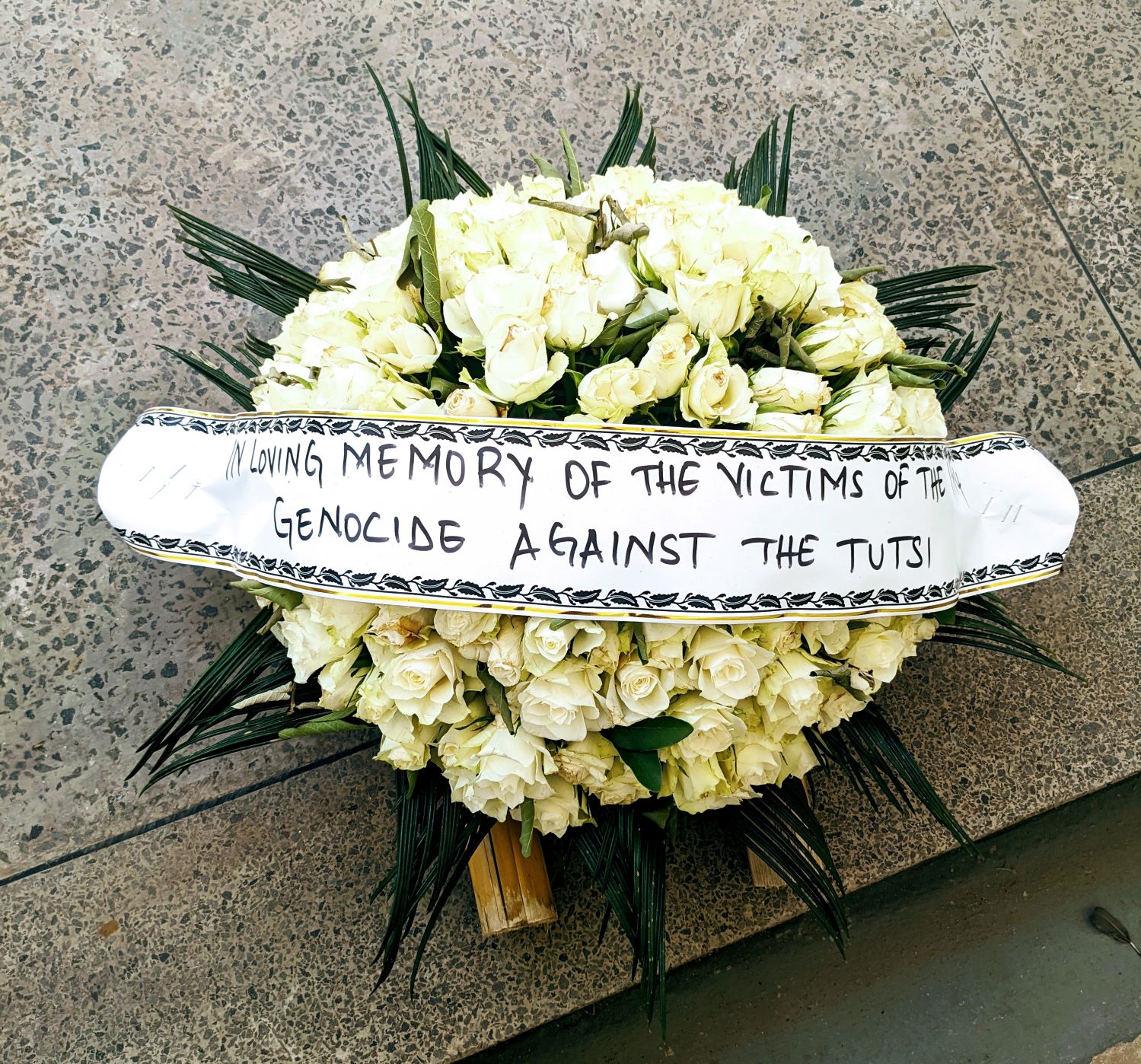
One million people in 100 days.
That is how many ethnic Tutsis were believed to have been murdered by Hutu forces — their fellow countrymen — in the 1994 Rwandan genocide. One million people in 100 days. Try to wrap your head around what that means. In order to kill that many people in so short a period of time, thousands, tens of thousands were wiped out en masse – in churches, in basements, in hospitals, whole communities gone in an instant, dumped in mass graves. Women and children especially were targeted so that there would be no next generations.
It seems to me that I can’t talk about the local basketmakers or the fabric market or really anything I have experienced and enjoyed here in Rwanda without first talking about the genocide which has so many reverberations 28 years later. Although many of you probably remember that a genocide occurred here, you probably see it through the lens of a different time, a distant place, a cursory understanding. That was me, too. But it seems to permeate the very air here, demanding attention.
I have tried to dig deep. I’ve read widely, visited two genocide museums, and I know I am but a neophyte, but I want to share what I have learned with you because understanding history is not merely instructive but exceedingly important. Wars, genocide, atrocities are, after all, a reflection of the basest instincts of humankind. This is a story of age-old ethnic conflict, absolutely, but it was codified in colonial arrogance and perpetrated with unabashed gusto after the West uniformly turned their backs on the slaughter.
Whitewashed hands, my friends, whitewashed hands.
There have historically been three ethnic groups living in Rwanda – the Hutu, who in 1994 comprised 85 percent of the population; the Tutsis, about 14 percent at the time; and the Twa, the indigenous, aboriginal people of Rwanda, at 1 percent. From what I can see, the seeds of the genocide were rooted in the 19th century as the Tutsi rose to prominence as the leaders of society while the Hutus were seen as essentially the worker bees. But this notion took a more sinister hold after World War I, when the Belgians assumed colonial rule and formalized the Tutsi’s role. I want to quote from a Human Rights Watch document about that period:
- “By assuring a Tutsi monopoly of power, the Belgians set the stage for future conflict in Rwanda. Such was not their intent. They were not implementing a “divide and rule” strategy so much as they were putting into effect the racist convictions common to most early 20th century Europeans. They believed Tutsi, Hutu, and Twa were three distinct, long-existent and internally coherent blocks of people… Unclear whether these were races, tribes, or language groups, the Europeans were nonetheless certain that the Tutsi were superior to the Hutu and the Hutu superior to the Twa—just as they knew themselves to be superior to all three. Because Europeans thought that the Tutsi looked more like themselves than did other Rwandans, they found it reasonable to suppose them closer to Europeans in the evolutionary hierarchy and hence closer to them in ability. Believing the Tutsi to be more capable, they found it logical for the Tutsi to rule Hutu and Twa just as it was reasonable for Europeans to rule Africans.
More white hubris, as if the world ever needed at any point in history more white hubris.
The Belgians systematically removed all Hutus from positions of authority and denied them higher education – a necessary steppingstone to achieve that authority. Over time, “People of both groups learned to think of the Tutsi as the winners and the Hutu as the losers,” the HRW report states. Moreover, the Belgians instituted a registration program, requiring citizens to identify as belonging to one of the three groups. Not surprisingly, identity papers imposed a rigidity between the ethnic groups so pervasive that some Europeans began referring to the groups as “castes.” As colonial rule was ending in the 1950s, Belgians under pressure from the UN began expanding the role of the Hutus, bringing some into government and easing the education rule. But apparently, by then, the Hutus had had enough and after the country gained independence, began exerting power with brute force. What followed is a “tables turned” period, as Hutu leaders began to impose the same strictures on Tutsi that they had suffered, denying access to employment and education. Sadly, history is replete with such moments. When the oppressed come to power, instead of finding a conciliatory, reasonable path forward, they can turn into the oppressors.
Enter the Hutu President Juvenal Habyarimana, who assumed power in 1973 and for the next 21 years ruled Rwanda with pretty much of an iron fist. Many Tutsis during this time fled to nearby countries. A group of Tutsis who fled to Uganda were trained by military forces there, eventually forming the RPA (Rwanda Patriotic Army) and its political arm, the RPF (Rwanda Patriotic Front), both led by the current president of Rwanda, Paul Kagame. The RPA made military excursions into Rwanda from Uganda and from what I can tell, that gave Habyarimana the excuse to create “the enemy.”
By 1992, things were very, very dicey for the Tutsi still in Rwanda. Here’s one of many Machiavellian twists to this tale. A widespread and virulent anti-Tutsi propaganda campaign was launched by government-friendly media. If you are headed on the road to dehumanize and then exterminate an entire people, the most effective means for reaching the greatest number of potential perpetrators is by constant and unconstrained propaganda. On the radio and in newspapers, both controlled by the government, Tutsi were excoriated ad infinitum as “inyenzi,” cockroaches. One newspaper opined, “the ‘cockroaches’ were everywhere. No one was innocent, the men and women were spies and the children, if not killed, would grow up to be spies.” The intention was to draw in all Hutus, rural and urban, into seeing their Tutsi neighbor, their Tutsi work colleague as the “other.”
And it worked. I saw one video of a survivor, who said she and her family lived next door to a Hutu family. The fathers were best friends and godfathers to each other’s children, the families would get together often for meals or to celebrate birthdays, the children played together. But – and I will spare you the grizzly details – after the genocide started, this godfather turned on his friend, killing his entire family. The survivor, a child at the time, played dead.
Meanwhile, the Army was going through its own desensitization and enlisting the Interahamwe, a Hutu paramilitary organization that would become the primary perpetrators of the genocide.
In April, 1994, a plane carrying Habyarimana and the president of Burundi was shot down and exploded into a field next to the Presidential Palace. The government immediately implicated the RPF as responsible (although 28 years on, a report on exactly who was responsible has still not been released) and WITHIN THE HOUR, the genocide had begun. I visited the Presidential Palace, now the Rwanda Art Museum, and saw the field. It has remained untouched if by now somewhat subsumed by turf. Here is a fuselage, there a wing tilted skyward, still further, a jet propeller. It was an eerie place, I won’t lie. Because that report hasn’t been released, I was unable to take pictures – a weirdness, for sure, for someone from the West.
I’ve seen transcripts or video of a number of survivors – each one as horrific as the one before. There was the young boy whose father was harboring Tutsi neighbors, when Interahamwe forces entered the family compound and ordered all 15 people out. His father was shot on sight and the others were forced to lie on the ground, where they were summarily shot and hacked with machetes, then a grenade was launched into the center for good measure. Badly injured, but alive, the survivor too played dead. I will spare you from reading more accounts, but believe me when I say that truly inhuman atrocities occurred many times every day. Women were raped and enslaved, babies were gruesomely killed, and on and on and on and on.
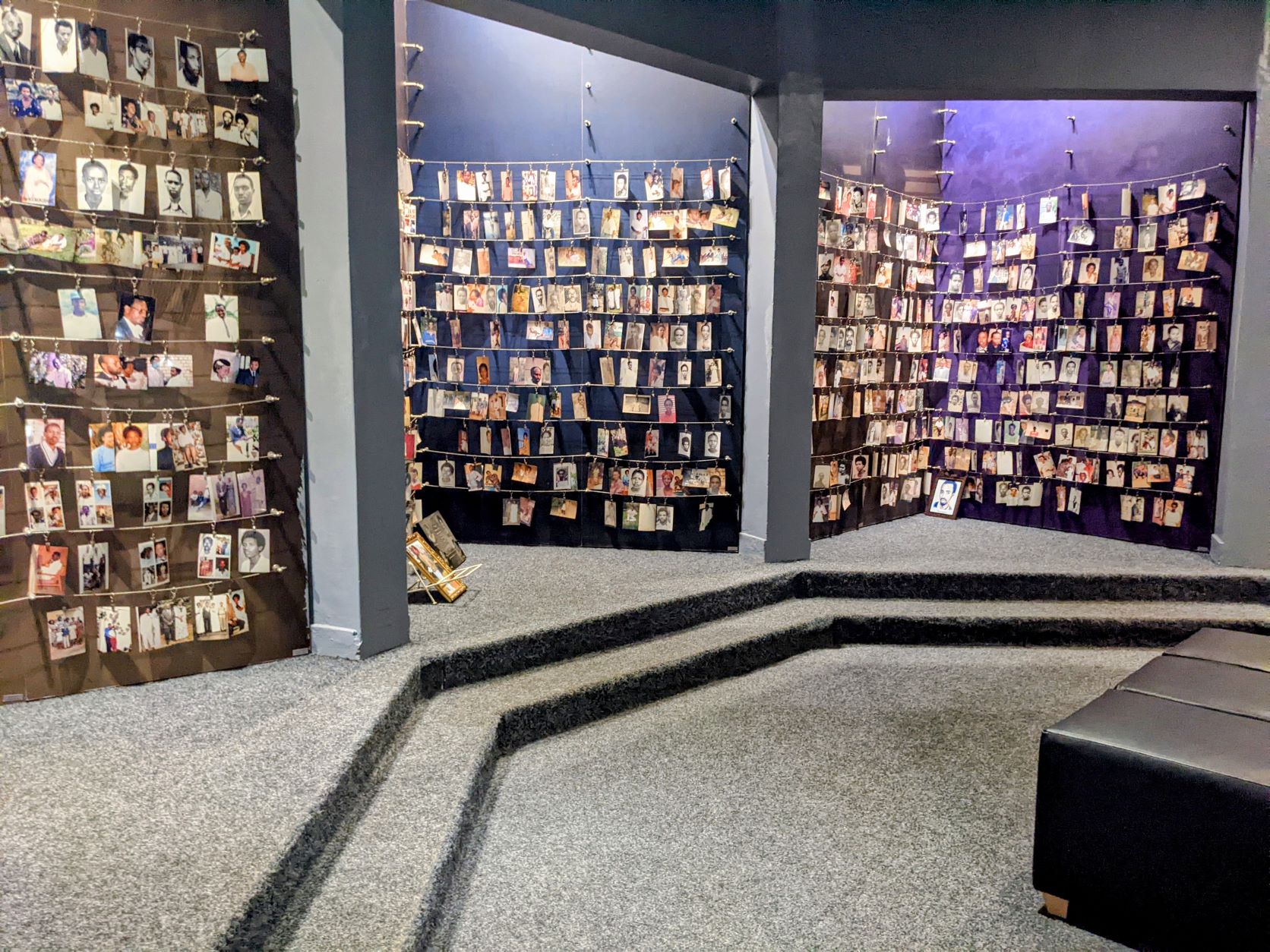
Or shall we talk about the complicity of many Hutu priests and nuns in the Catholic Church? Perhaps the most abhorrent story was of one Father Athanase Seromba who herded more than 3,000 Tutsis into his church promising protection and then bulldozed the church, killing everyone inside. He is serving a life sentence. The archbishop had longstanding ties to the government and sat on Habyarimana’s Central Committee for 15 years, as it created discriminatory policies against the Tutsi. In fact, there were so many Catholic perpetrators that in 2017, Pope Francis issued a formal apology.
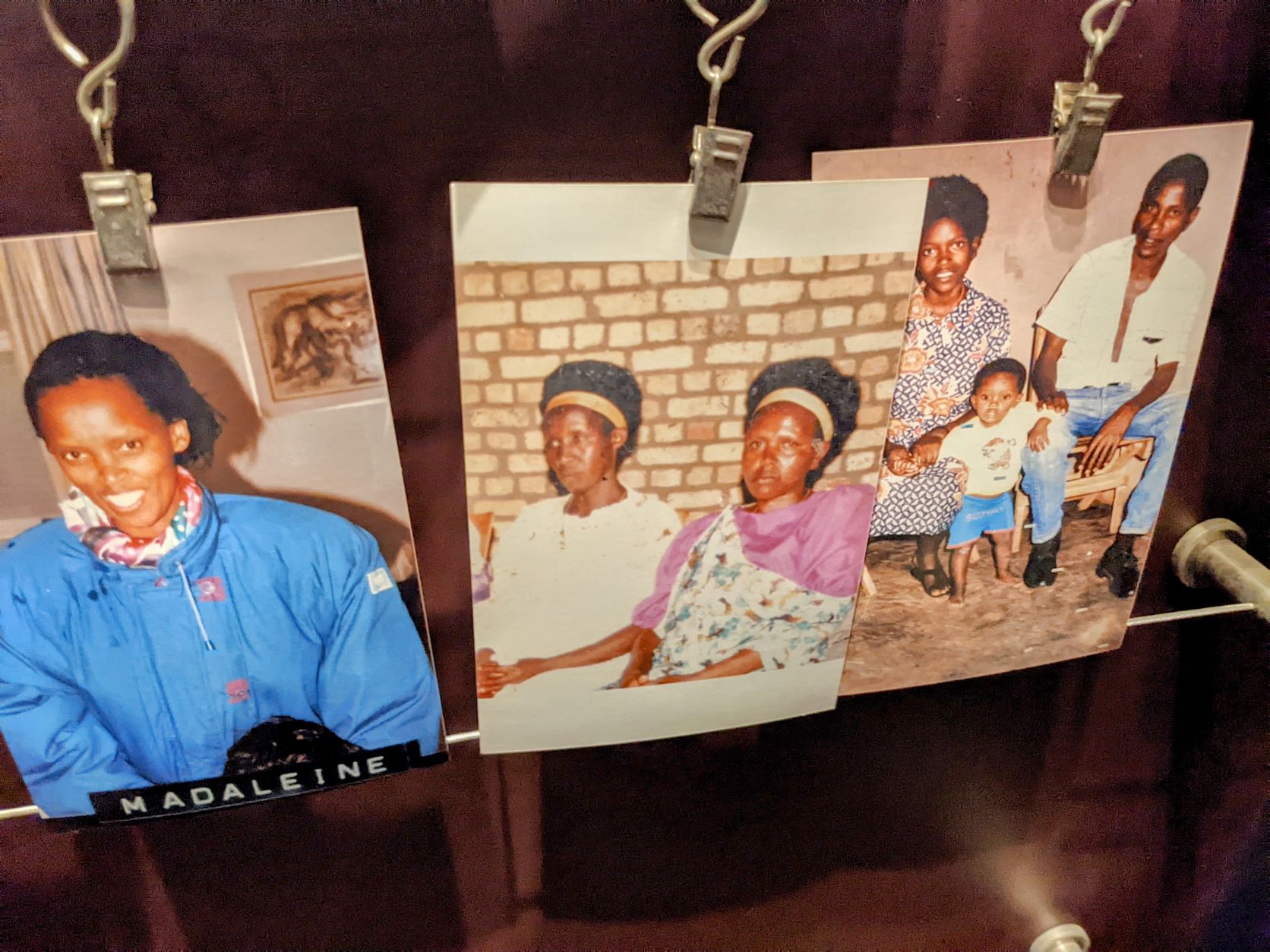
And speaking of day-late-and-dollar-short apologies, French President Emmanuel Macron waited until 2021 to come to Rwanda to apologize for France’s role in supporting and “enabling” the genocide. France continued to align with the Hutu government in the time leading up to and during the genocide, and then covered up its role. Macron came only after French and Rwandan reports on the complicity were published last year. Here’s a quote for you. Then-president Francois Mitterrand said, “In countries like that, genocide is not so important.”
As an American, I was appalled at the role of the Clinton Administration in not just ignoring the genocide, but ultimately working to reduce peacekeeping troops there. In this it was not alone. A report of the George Washington University National Security Archive states: “As the killing intensified, the international community deserted Rwanda.” Western nations with diplomatic and related staff in Rwanda sent planes to evacuate its citizens, and then left, never to return.
After media and human rights groups drew attention to the genocide, the UN vowed to send in peacekeeping troops. But get this. In Clinton White House emails declassified in 2015, the US delegation to the UN argued to the Security Council that all peacekeepers should be withdrawn. This was on April 15, 1994 about a week into the genocide. On April 21, the peacekeeping force was reduced from 2,000 (only 2,000!) to 270, thanks to America.
On May 26, White House legal advisor Alan Kreczko opined to a National Security Council staffer, “Concluding that genocide has occurred/is occurring in Rwanda does not create a legal obligation to take particular action to stop it.” I am not naïve about how the political system works, in America or anywhere, but this view is immoral, cynical and lacking in any trace of compassion. And frankly – and I take nothing away from the massive and critically important aid flowing to the Ukrainian people – I am reminded once again that the color of skin tends to dictate what kind of response the West accords people. Rwanda, Syria, the Rohingya, they just quickly come to mind, all largely ignored or actively repelled.
The genocide ended in mid-July, 100 days after it began, when the Tutsi-led RPF took control of Kigali and overthrew the Hutu government. Today, the Tutsi which once represented 15 percent of the population, now comprises 8.5 percent.
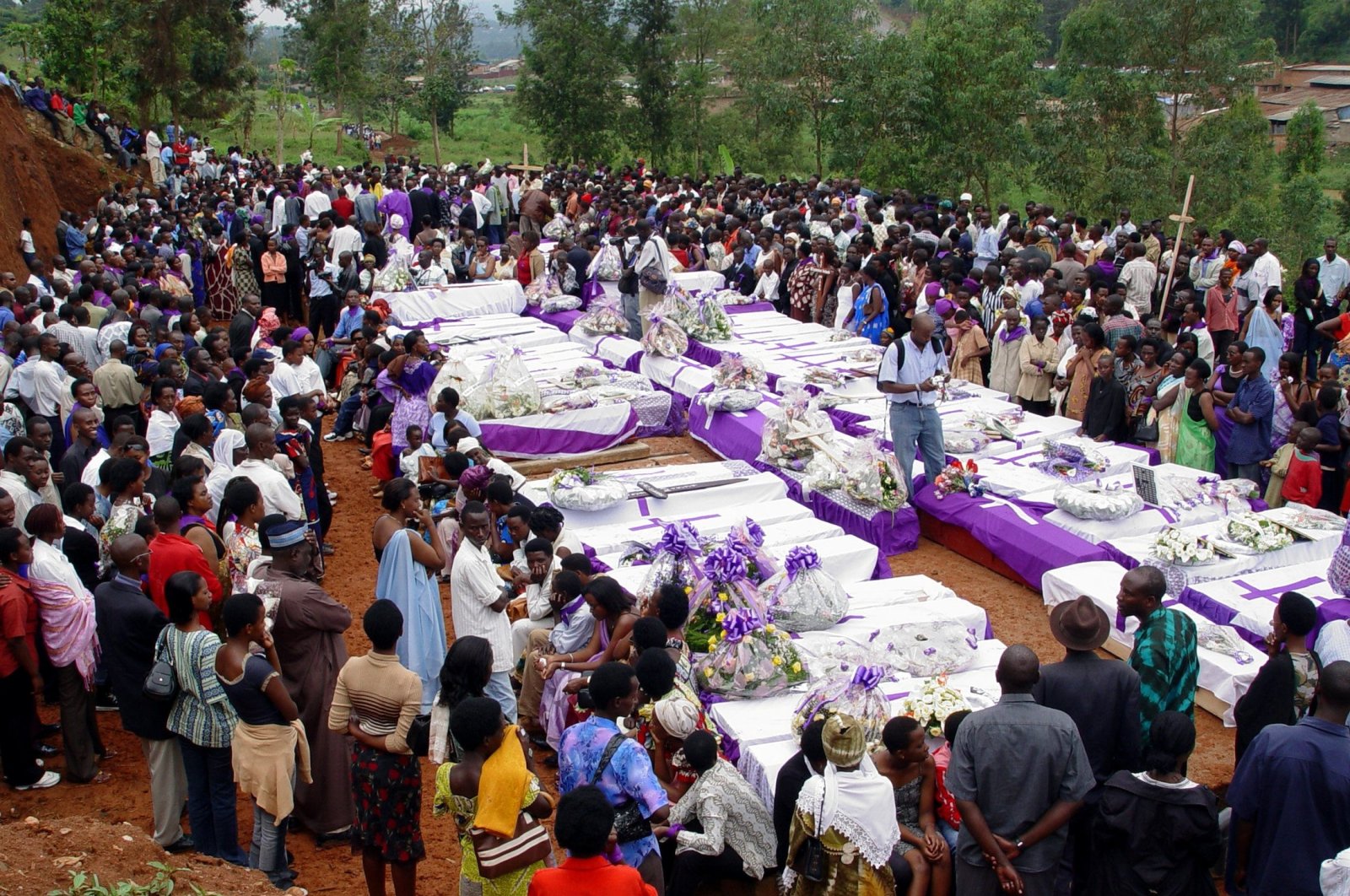
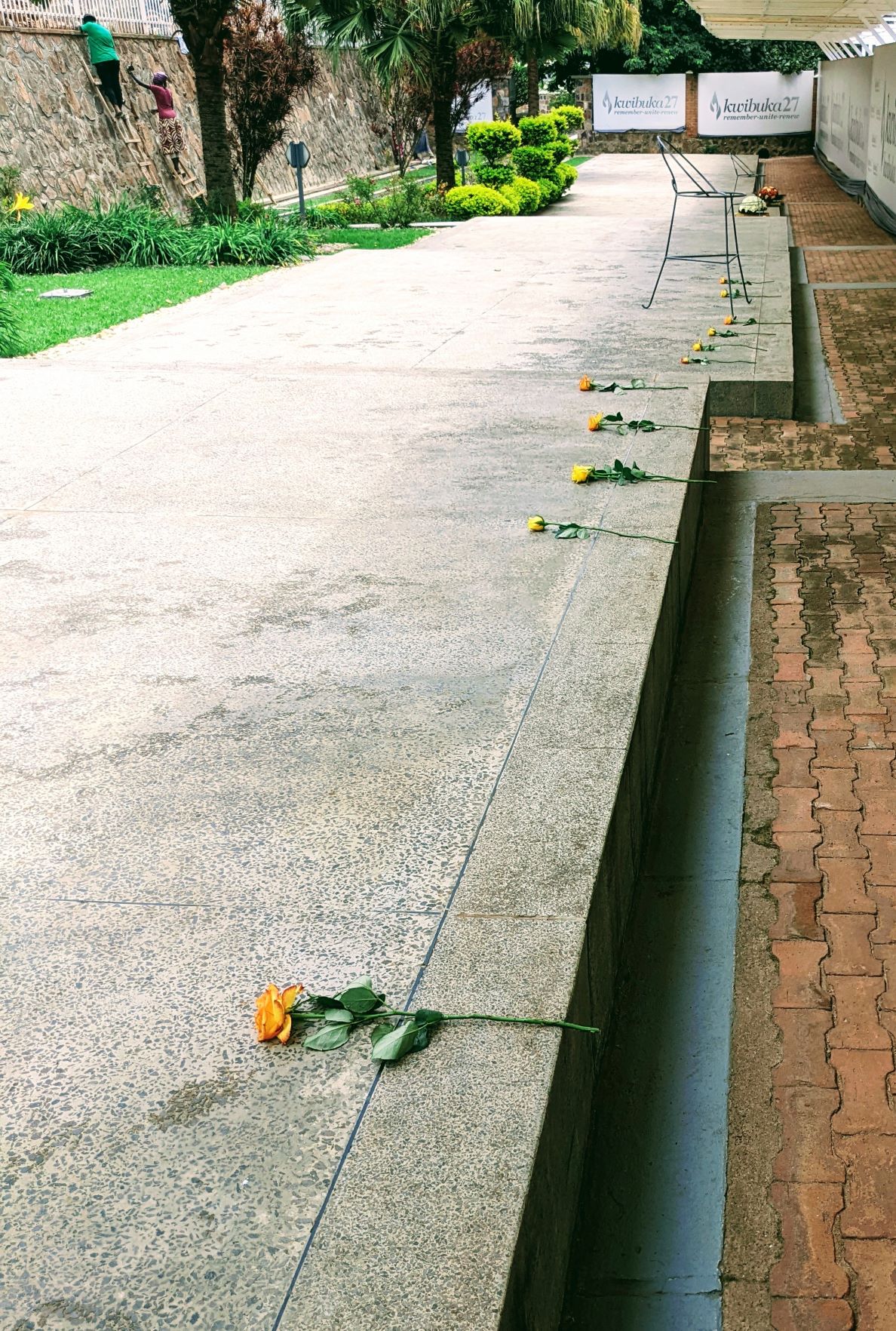
I visited the Kigali Genocide Memorial last week. This is a place of thoughtful planning, quiet dignity and respect. Some 250,000 victims recovered from large dumping grounds around the country were brought to the memorial and buried with dignity in five mass graves. Individual and bouquets of roses are placed there, a message to the dead from the living that they are honored. It took my breath, honestly, and I found I had trouble leaving to visit the many gardens on the grounds, the Garden of Self-Protection and the Flower of Life Garden among them. In the museum, panels laid out in stark, unvarnished language the history leading up to, during and after the genocide. And after all this, while I was so filled up with emotions that the very skin on my arms tingled, I entered one final room. Here, in five separate alcoves, are row upon row upon row of pictures of the deceased. By the third alcove, I was done in. I sat on a bench and let the tears finally flow. How is this possible? How can human beings – fathers, daughters, uncles, brothers – turn into killing machines? And what did these beautiful people do to deserve such a fate except, in the final analysis, to merely exist?
In the years after the genocide, the country formed the ‘Gacaca’ courts, community courts set up to bring justice at the local level. That was in addition to the UN International Criminal Tribunal for Rwanda, which prosecuted the most serious offenders. By the end of the 1990s, at the insistence of women activists in Rwanda, rape was prosecuted as a war crime at the ICTR for the first time. It set a precedent for all future war crime rape prosecutions in international courts. Today, a number of policies and laws have been put in place to ensure an integrated government and justice system, as well as “unity” compliance among all citizens. This could be the subject of a whole separate blog, but I’ll leave you with two such measures. It is against the law to say the words Tutsi or Hutu, with legal ramifications for noncompliance. And so no one does. The idea, I believe, is that over time the distinction will disappear and all Rwandans will live in unity. There is also a policy that establishes Umuganda, a monthly day of volunteering in service to the community as a whole. Again, the agenda here is that if people are working together, before long the “other” disappears. These are just two of many measures that buttress the notion that Rwandan society must not return to the not-so-distant past.
Thank you for your attention. As I said at the outset, lifting the veil of history, if only for a moment, is so important, so necessary. I know this was a difficult read and I so appreciate your forbearance. Let us hope that all of us, no matter where life finds us, will strive to live a life of compassion and love, and work never to give in to our baser selves. May it be so.
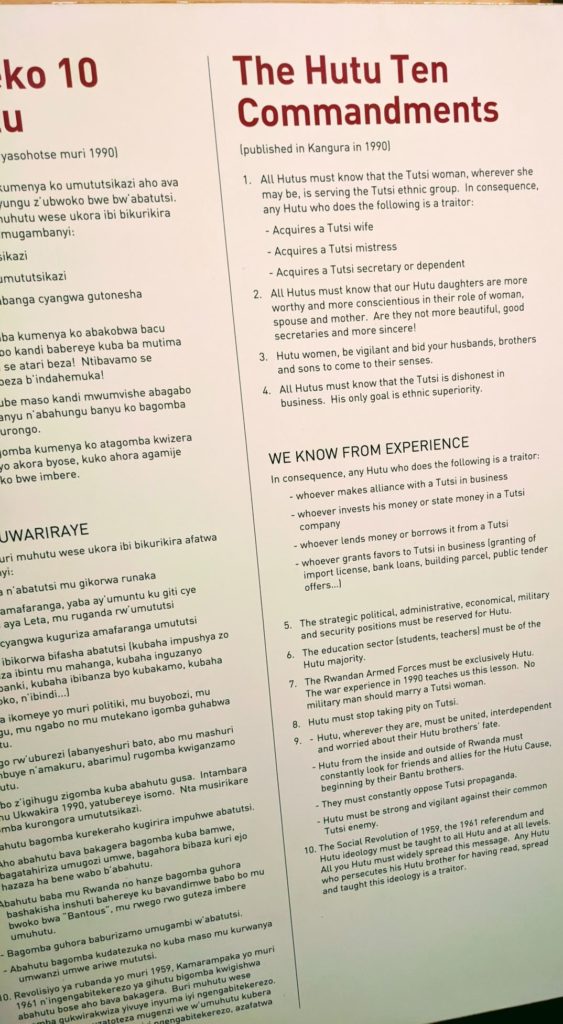
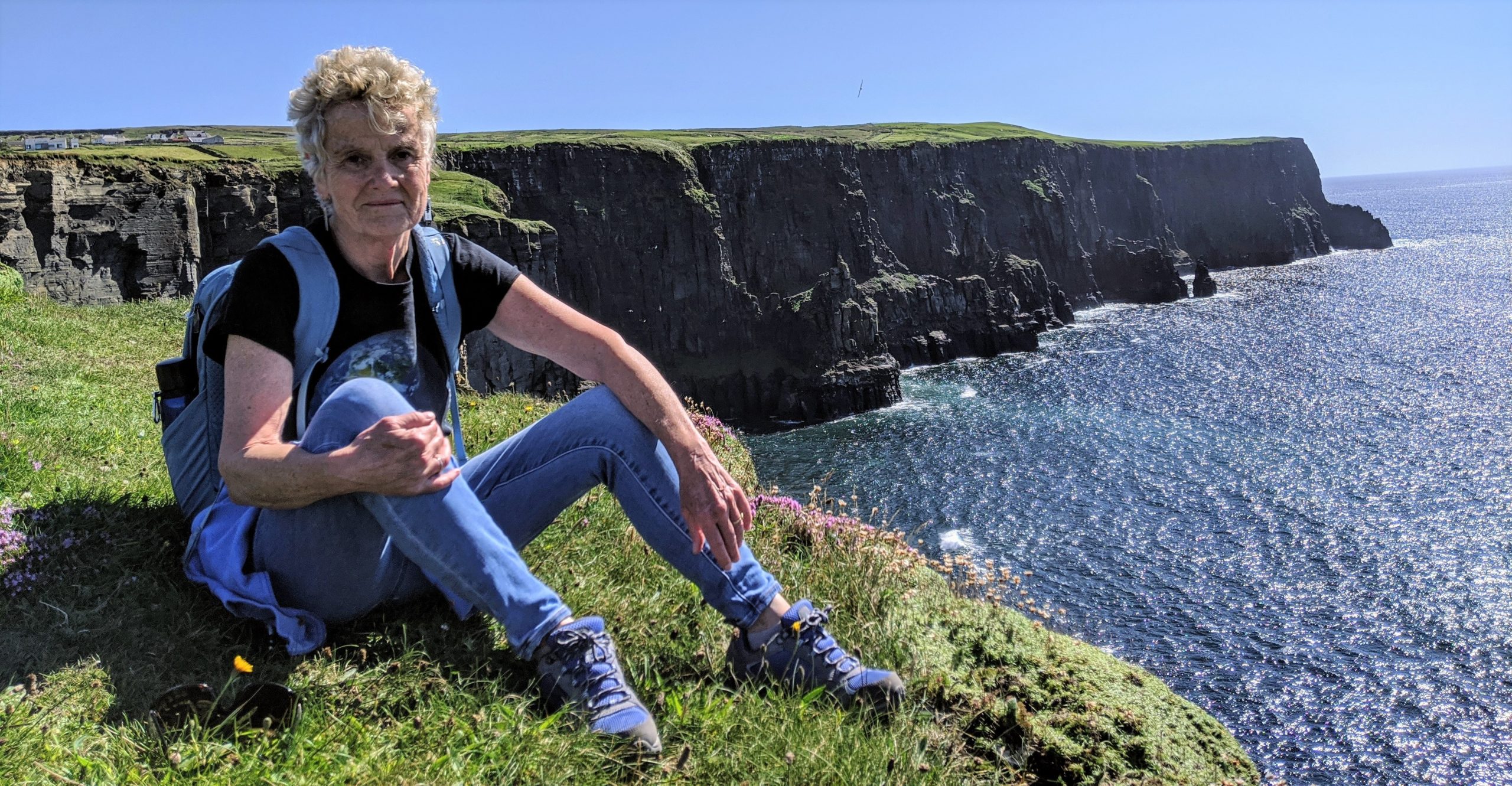
Reader Comments
The word tragic came to mind first but it doesn’t express the horrific violence, brutality, slaughter that took place. No words are evil enough. Thank you for sharing your emotional experience. Tragic truth for sure.
Weep is right😢
Such a concerted effort… and the complicity is horrific. Thank you for this deep and incredibly well researched history… much too close. Has there been any evolution at all… is it possible? There appears to be compromise, but our world seems to lean into the darkness. Thank you Deborah
Stunning in a horrific way, but definitely a story that should be told over and over again. I’d say that repeating stories like this would make people learn but I don’t believe that. Nice work Deb.
Stunning in a horrific way, but definitely a story that should be told over and over again. I’d say that repeating stories like this would make people learn but I don’t believe that. Nice work Deb. I love reading your stories from afar.
Horrendous. Such inhumanity while so many nations stood by and let it happen. So sad and unforgivable. Thanks for the details that have been all for forgotten,
Maybe there should be “unity” compliance in every country on the planet….just imagine! A Rwandan lesson for humanity.
I thoroughly enjoy your posts, Deb – thanks for taking the time and sharing.